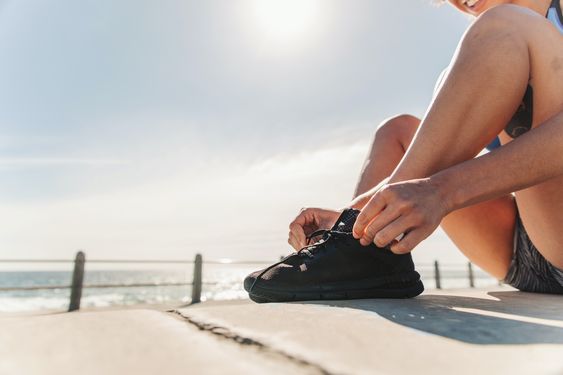For people who exercise regularly, blisters on the soles of the feet during exercise are a very common phenomenon. Don't look at a small blister, it will make you very pain and limit your activities. If the blister is infected, the impact will be severe. bigger. And people often choose to pop the blisters in their lives, but can the blisters on the soles of the feet be popped? What should I do after it breaks? Let's take a look together below.
Do blisters develop?
When we are exercising, the repeated friction between the feet and the shoes and socks will cause the epidermis and dermis to be torn and separated to form a gap. The gap is filled with transparent liquid or blood, and the formed fluid sac is what we call a blister. Blisters can occur in the following two situations: one is blisters caused by continuous running, sudden stops, sharp turns, and constant friction between the soles of the feet and the bottom surface; The temperature rises relatively, causing the cuticle to soften, and it is also easy to cause blisters.
Where do blisters often appear?
1. Blisters on the sides of the feet
Generally, the main cause of this kind of blister is that the shoes do not fit well. Especially now that more and more young people like to shop online. If the shoes are too big or too small, the feet will keep moving in the shoes, and blisters will easily form.
2. Blistered toes
During exercise, the places that are most likely to be rubbed are the back of the Achilles tendon, the instep, the inside of the big toe, the inside of the forefoot, and the back of the Achilles tendon and the back of the instep are usually worn out because of the thin cuticle.
3. Blisters on the heels
Because the skin of the Achilles tendon is very thin, friction during exercise will more easily cause blisters, and in severe cases, it is easy to grind blood blisters.
How to prevent blisters on the soles of feet :
1. It is recommended to use blister plaster. Its surface is smooth and can play a good role in preventing skin abrasion. It also has strong self-adhesive properties.
2. It is best to prepare two pairs of sports shoes that fit your feet and use them alternately. Different styles of shoes are worn on the feet, and the contact parts and pressure are always different. This can reduce frequent pressure on certain parts of the feet and reduce the chance of blisters.
What should I do if I have blisters?
If the diameter of the blister is less than 5mm, there is no need to puncture it, the skin will slowly absorb the liquid in the blister, if the diameter of the blister is larger than 5mm, it needs to be punctured, the operation steps are sorted out for everyone as follows:
Step 1: Wipe the blistered area with alcohol for disinfection.
Step 2: Use a sterilized needle to puncture along the edge of the blister, use a clean cotton ball to absorb the liquid in the blister, and be careful not to break the skin as much as possible.
Step 3: Use a sterilized cotton swab to squeeze out the liquid in the blister. Put on blister plaster, which can provide a slightly acidic airtight space for the wound that is conducive to wound healing. If the blisters have been worn out during exercise and the red and tender wound surface is exposed, you can first disinfect it with iodine, and then paste the blister plaster after it dries.
For more information on Innomed® blister plaster, refer to the previous articles. If you have customized needs, you are welcome to contact us; we will serve you wholeheartedly.
At Longterm Medical, we transform this data by innovating and developing products that make life easier for those who need loving care.
Editor: kiki Jia
Date: February 13, 2023

 English
English عربى
عربى Español
Español русский
русский 中文简体
中文简体








